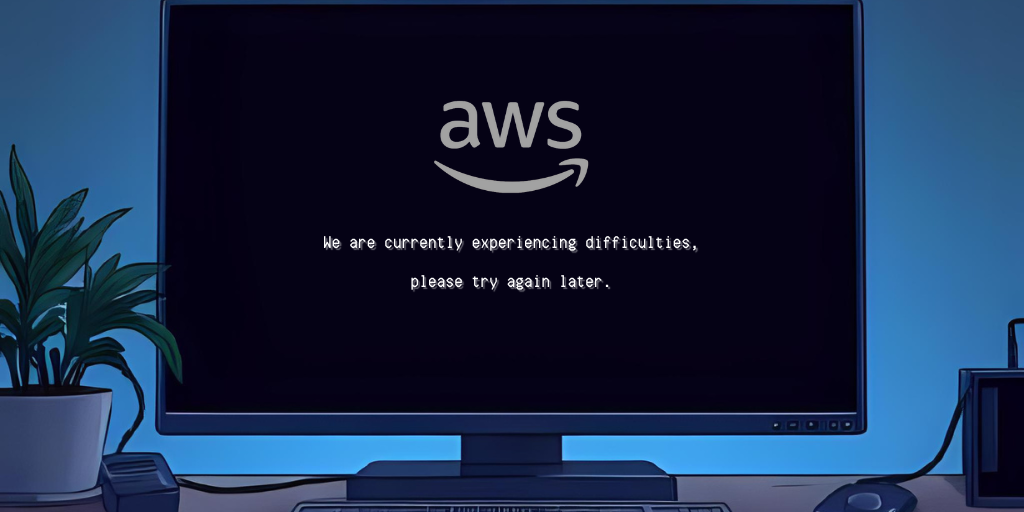AI Voice Cloning: A New Era of Phishing Attacks
AI-powered voice cloning is revolutionizing cybercriminal tactics, ushering in a new wave of compelling phishing attacks that threaten business...

Discover the wide-ranging implications of the latest AWS outage and how it is reshaping operational strategies for businesses of all sizes.
In October 2025, AWS experienced a significant service disruption that impacted businesses globally. Preliminary reports indicate the outage was triggered by a cascading failure in AWS’s primary network infrastructure, exacerbated by a series of configuration errors during a routine update. These technical glitches resulted in widespread connectivity loss across multiple AWS regions, affecting core cloud services including EC2, S3, and RDS.
The incident highlighted the interconnected nature of modern cloud environments. Despite AWS’s robust failover and redundancy systems, the simultaneous occurrence of a software bug and misconfigured failover protocols delayed recovery. This serves as a reminder that even the most resilient cloud platforms are not immune to operational risks, underscoring the importance of layered security and disaster recovery plans.
The AWS shutdown had immediate repercussions for organizations of all sizes and sectors. E-commerce platforms experienced widespread transaction failures and abandoned carts, resulting in significant disruptions to revenue streams and a decline in customer confidence. Healthcare providers faced downtime in critical patient management, scheduling, and diagnostic systems, raising concerns about continuity of care and data access. SaaS vendors, striving to meet stringent service-level agreements, struggled to maintain uptime, respond to user queries, and provide support, resulting in service degradation and delays for end users.
Small and midsized businesses (SMBs) felt the impact acutely due to their heavier reliance on public cloud infrastructure and limited in-house IT resources required for rapid remediation. The outage exposed systemic vulnerabilities in supply chain logistics, disrupted customer service channels, and hampered essential internal workflows, from payroll processing to inventory management. These operational setbacks caused not only direct revenue loss but also longer-term reputational damage, challenging customer trust and highlighting the urgent need for more resilient cloud and business continuity strategies.
Incidents like the October 2025 AWS outage challenge the perceived infallibility of leading cloud providers. For many organizations, trust in AWS’s ability to deliver consistent uptime and rapid recovery has been shaken, prompting renewed scrutiny of service-level agreements (SLAs) and business continuity planning. Companies are evaluating the effectiveness of their contractual safeguards and reassessing whether their existing contingency measures are robust enough to ensure uninterrupted operations during major provider disruptions.
The event has accelerated conversations around shared responsibility in the cloud. Businesses are reevaluating their dependency on single-vendor solutions and seeking greater transparency into providers’ operational resilience, incident response, and communication protocols. This heightened focus extends to evaluating the visibility organizations have into the root cause analysis and remediation processes of their providers, understanding how and when outage notifications are communicated, and what specific post-incident actions are taken to mitigate future risks. As a result, stakeholders are advocating for more precise lines of accountability and more collaborative approaches to risk management, recognizing that effective resilience in the cloud hinges on shared efforts between providers and customers alike.
In response to the outage, companies are diversifying their cloud architectures and investing in multi-cloud or hybrid cloud models. This strategic shift empowers organizations to distribute workloads intelligently across multiple providers or retain critical applications on-premises, significantly mitigating the risks associated with single points of failure. By leveraging a broader mix of infrastructure options, businesses can enhance both operational continuity and agility, ensuring that disruptions from any single vendor have a limited downstream impact.
Organizations are also accelerating the adoption of disaster recovery as a service (DRaaS), automating backups for seamless data restoration capabilities, and strengthening identity and access management controls to protect against unauthorized access during incidents. These measures are foundational steps toward building a more resilient digital environment, enabling rapid recovery and maintaining compliance in the face of evolving cyber threats.
For small and midsized businesses, the path forward increasingly involves partnering with trusted managed security service providers and engaging virtual Chief Information Security Officers (vCISOs). These external experts deliver specialized guidance to align cloud utilization with business objectives, enforce regulatory requirements, and design tailored incident response strategies. By accessing enterprise-grade cybersecurity resources at a fraction of the typical cost, SMBs can support secure growth and uphold stakeholder trust, even amid industry-wide disruptions.
To effectively minimize the impact of future outages, organizations must embed resiliency into every facet of their IT strategy. This means conducting thorough, ongoing risk assessments to uncover and address vulnerabilities before they can be exploited. Regular testing and refinement of disaster recovery plans are critical, ensuring teams can respond quickly and decisively in the face of disruption. Establishing redundant and geographically dispersed systems for mission-critical workloads provides an extra layer of protection, enabling continuity even if a key cloud service is compromised.
For small businesses and SMBs, the stakes are exceptionally high given constrained resources and the potential for operational disruption. Engaging experienced cybersecurity consultants or managed security service providers is essential for building a mature, risk-aware security posture. These partnerships help identify gaps in infrastructure, advance cloud security best practices—including robust identity and access management—and craft dynamic incident response playbooks that reflect the unique requirements and constraints of each organization.
Equally important is the adoption of automated monitoring solutions and security frameworks, such as NIST or SOC 2, to ensure ongoing compliance and rapid threat detection. By proactively investing in these resiliency measures, organizations can shift their security programs from reactive cost centers to strategic drivers of business value. Ultimately, this approach not only ensures operational continuity and regulatory compliance but also reinforces customer trust and positions the business as a reliable partner, even amid large-scale service disruptions.

AI-powered voice cloning is revolutionizing cybercriminal tactics, ushering in a new wave of compelling phishing attacks that threaten business...

Small businesses face growing cyber threats, making multi-factor authentication a critical defense to safeguard sensitive data and ensure business...

Discover how CMMC 2.0 is reshaping cybersecurity compliance for small manufacturers in the defense sector and what steps your business must take to...